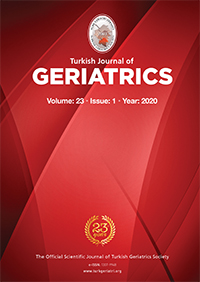2BaltalimanÄą Metin SabancÄą Bone Diseases Training And Research Hospital, Department of Physical Medicine and Rehabilitation, Istanbul, TURKEY
3Haydarpasa Numune Education and Research Hospital, Department of Physical Medicine and Rehabilitation, Istanbul, TURKEY
4Gebze Technical University, Department of Computer Engineering, Kocaeli, TURKEY
5Avrasya Hospital, Department of Physical Medicine and Rehabilitation, Istanbul, TURKEY DOI : 10.31086/tjgeri.2020.145 Introduction: The aim of this study was to evaluate the effects of video-based virtual reality exercises performed using the LeapMotionÂŽ device and FizyosoftÂŽ software on the hand and upper extremity functions of patients with hemiplegia.
Materials and Method: The mean age of the patients in the study group was 63.6 Âą 7.1 years and the duration of the disease was 13 Âą 10.74 months. The mean age of the patients in the control group was 63.6 Âą 9.2 years and the duration of the disease was 10 Âą 9.89 months. This study was a randomized, controlled, singleblind study. The patients were randomly divided into two groups: an experimental group and a control group. Both groups were arranged to undergo a combination of a neurophysiological and a conventional exercise program and physical therapy. In addition, virtual reality training therapy was administered in the experimental group using the LeapMotionÂŽ device. The patients" range-of-motion (ROM) was measured using the FizyosoftÂŽ software, which operates with the LeapMotionÂŽ device, and their upper extremity and general function status was evaluated using the Fugl-Meyer assessment of upper extremity motor impairment (FMA-UE) scale, the Brunnstrom recovery stage (BRS) scale, the Barthel Index (BI), and the Functional Ambulation Categories (FAC) scale at the beginning and end of treatment.
Results: Significant improvements were noted after treatment in the upper extremity range-of-motion values as well as in FMA-UE, BRS, BI, and FAC scores in the experimental and control groups. Additionally, there were significant differences in the ROM measurements of the hand and wrist joints between the groups. However, no significant differences in clinical test results were observed between the groups.
Conclusion: Virtual reality exercises have a positive effect on range-of-motion measurements in stroke patients. Studies with a larger number of participants are needed to demonstrate results more clearly using other scales.
Keywords : Hemiplegia; Stroke; Virtual reality; Rehabilitation
